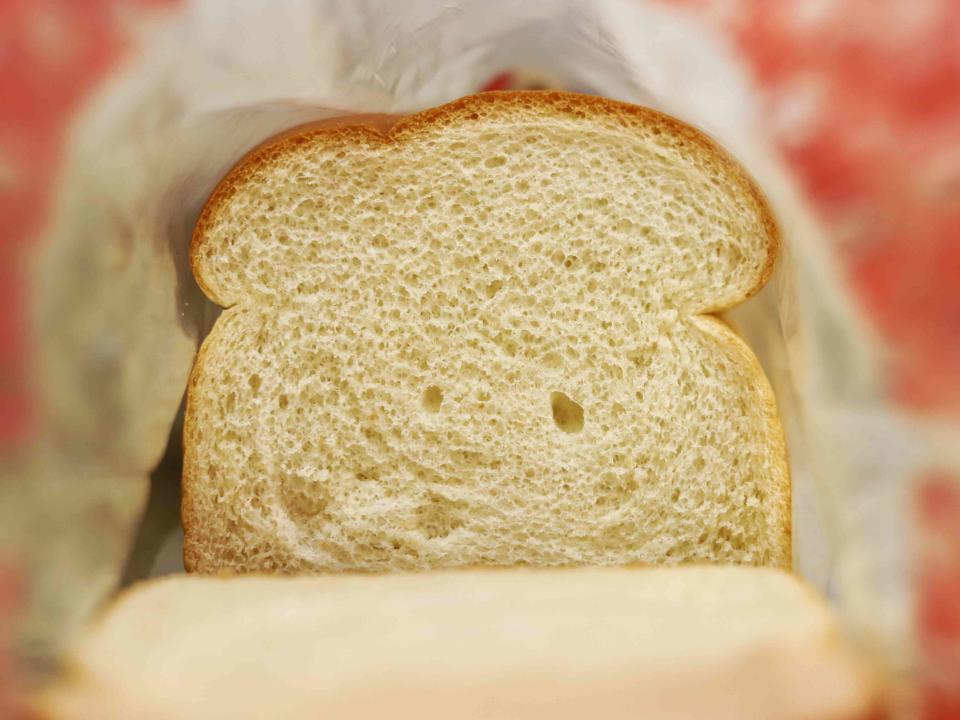Wonder Bread Settles the Debate: This Is the Best Way To Store Sliced Bread
Bread box or no bread box? We have the official answer.

Getty Images / Robin Gentry
If there’s one thing you never want your food supply to run short on, it’s sliced bread. It’s the base of endless quick meals, lunchtime fixes, and late-night bites. It’s one of those grocery staples you never really know when you’ll need, but you just know you will need it at some point.
And, on the occasion you reach for that ever-dependable bag of sliced bread, there’s nothing more horrifying than realizing mold has gotten to it faster than you have. Now, your beloved white bread—as well as your dreams of a quick PB&J snack—are headed to the trash.
Mold doesn’t have to be the fate of your favorite white bread; Spoilage is almost entirely dependent upon where you store the loaf. Some people swear by the bread box, others the kitchen counter, while still others keep it tucked away by the eggs in the fridge. With all these differing opinions, how do you know which way is the best? You ask the experts.
We reached out to Wonder Bread, one of the brands most synonymous with white bread, to find out the very best way to store sliced bread for as long as possible (and avoid any moldy bread misfortunes ever again). So, if you’ve ever found yourself pausing when it’s time to put away the sliced bread, here’s your storage answer, once and for all.
The Best Way to Store Sliced Bread, According to Wonder Bread
What we love about sliced white bread—its soft, sweet, squishy taste—is exactly what makes it difficult to store. It holds a lot of moisture, which makes it susceptible to mold growth. So, keeping fresh bread away from outside air (where mold spores are present), heat, and moisture is the key to keeping it mold-free.
“The best thing you can do to prolong the shelf life of your bread is to keep it in a cool, dry place – like a bread box or pantry – and of course, you want to make sure the bag is properly sealed,” said Haley Benson, Wonder Bread’s Senior Bakery Scientist, in an email statement to Allrecipes.
Is a bread box really best? “A bread box is a controlled, dark, dry environment that ensures freshness,” Benson added. “With a bread box, there are no risks of added humidity or spills on a counter in the kitchen, etc.” So, while the pantry is likely a safe bet, the bread box adds an extra layer of oxygen, moisture, and heat protection.
P.S. You don’t need to transfer the bread to a zip-top bag or airtight container to properly seal it. “The Wonder bag was designed to properly seal the product and retain the utmost quality and freshness throughout the duration of its coded shelf life," Benson added. “There’s no need to transfer to a different bag.”
How Long Does Sliced Bread Last?
In general, store-bought white bread contains additives that keep it fresher longer than a homemade or artisanal loaf, but the ingredients can vary by brand.
Stored in a cool, dry place, the average bag of sliced white bread will last five to seven days. But, if you can’t eat the whole loaf within a week, there are other options.
Can You Keep Sliced Bread in the Fridge?
“The fridge is not recommended from a freshness standpoint, as it dries out the bread and stales it more quickly with moisture migration," said Benson. "There is no risk from a safety standpoint when refrigerating—it’s purely from a quality perspective.”
While refrigerating isn’t recommended, freezing is a great option for prolonging the shelf life of bread if you don’t plan to eat it within seven days. It can actually last in the freezer for several months without losing quality, as long as it’s stored in an airtight container. Then, thaw it or toast it when you’re ready to use, and it’ll come right back to life.
“However, do not re-freeze after thawing,” Benson noted.
So, whether you go through a bag of white bread in a week or take several weeks to use up your loaf, follow Wonder Bread’s time-honored advice for avoiding the moldy bread blues once and for all.
Read the original article on All Recipes.
